zing
Platinum Member
Hi all, would appreciate any advice you have as I know the very basics of how hydraulics work but am not competent enough to diagnose with certainty what is wrong when something goes wrong. Tractor is a 1986 Case 1394, but I have only had it for 5-6 years and do not know its history. The FEL may have been added on after purchase by a previous owner and may not even be a CASE loader or hydraulics.
The issue
The loader has never been very strong when lifting, but that has not been a big issue since most of my work is with the PTO for bush hogging. Moved about a dozen tandem loads of dirt over the last couple of months though and I could see that it was even weaker at the end then it was when I started that job. Then this morning the loader just gave out completely. Worked when I started the tractor and lifted the loader a couple of feet to be able to drive, then went out to bushhog. WHen I got to the field I tried to raise the loader higher and nothing. Tried the lever forward and the loader dropped, but would not come up at all any more. Loader will not raise and bucket will not tilt upward. Had to drive backward all the way from the field to the shed, dragging the bucket on the ground. 3 pt hitch still raises and lowers normally, and front power steering work fine. The fluid in the resevoir is at the full line on the dipstick. Here are my questions.
1. Is this loader powerred from the same pump as the 3 pt?
The loader valve has 4 hoses that go forward on the loader arm and two supply hoses that come back to just under the right hand side of the seat. Does that mean they are from the same pump as the back end hydraulics for the 3 pt? If that is the case then I presume my hydraulic pumps is not the issue, and that the filter is not clogged. (I will be honest though, that I don't even know where the pump and the filter are located.) Here is a pick of the hoses that supply the FEL valve.
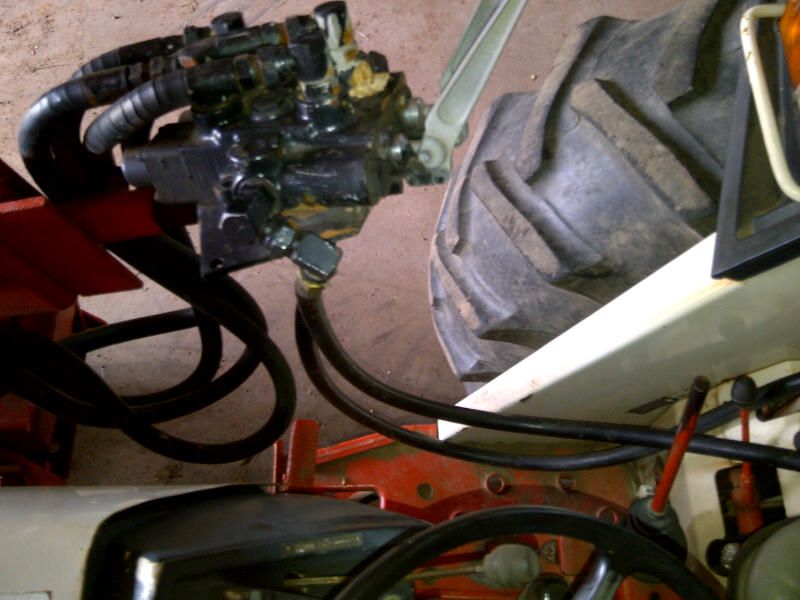
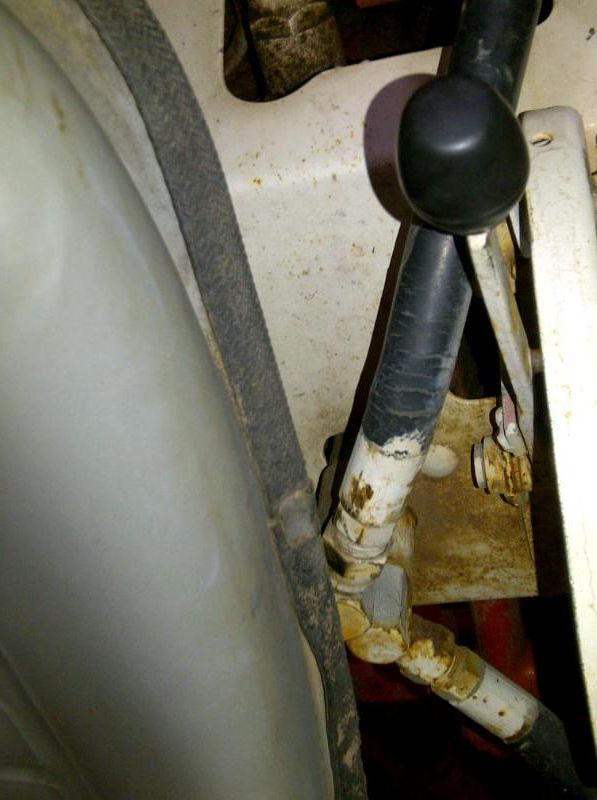
2. My guess is that the issue is the loader valve. Do you agree?
The hoses that supply fluid to the FEL valve are getting warm when the tractor is running but the hoses to the loader arms and the bucket are not, so it seems like the fluid is getting to the valve but then going nowhere. To me that suggests that the FEL valve is the issue, but I am definitely not sure. Is it possible that there may have been air introduced to the system and maybe it needs to be bled? Is that what these two flat nuts are for that are underneath where the hoses connect into the valve?

3. If it is the valve, can that be repaired instead of replaced?
A friend who has more knowledge than I said that the valve rings can go and cause it to just let the fluid bypass. Is this correct, and does it make sense for both the bucket and the arms to stop working at the same time when this happens? He was just trying to help by giving a diagnosis over the phone, so it is hard for him to be sure, but he said that if I took apart the valve by taking the bolts out where the plungers go in, I could change the o rings. Does this sound correct to you guys, or is it at least the most logical starting point?
4. If we are in agreement to this point, what is the best way to take apart the valve, from the plungers in the front held in by two bolts, or the shrouds in the other end held in by 4 bolts? Pictures below?
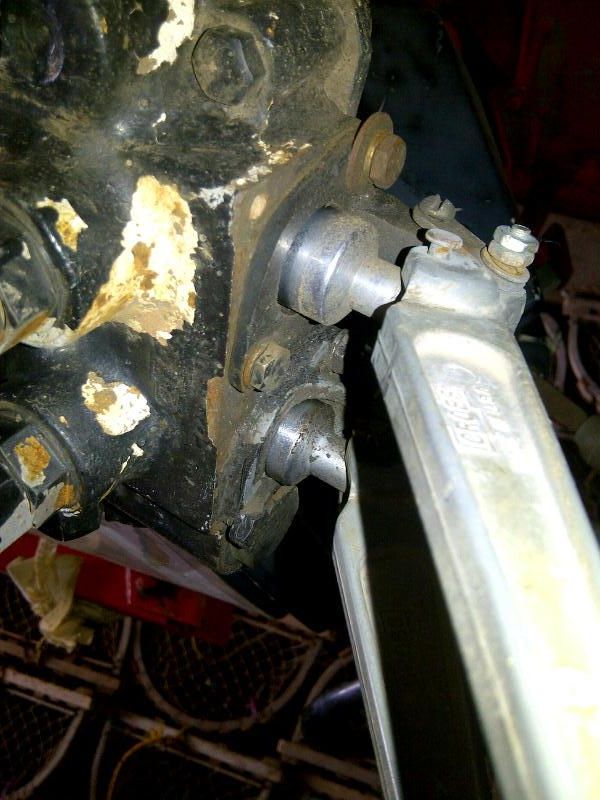
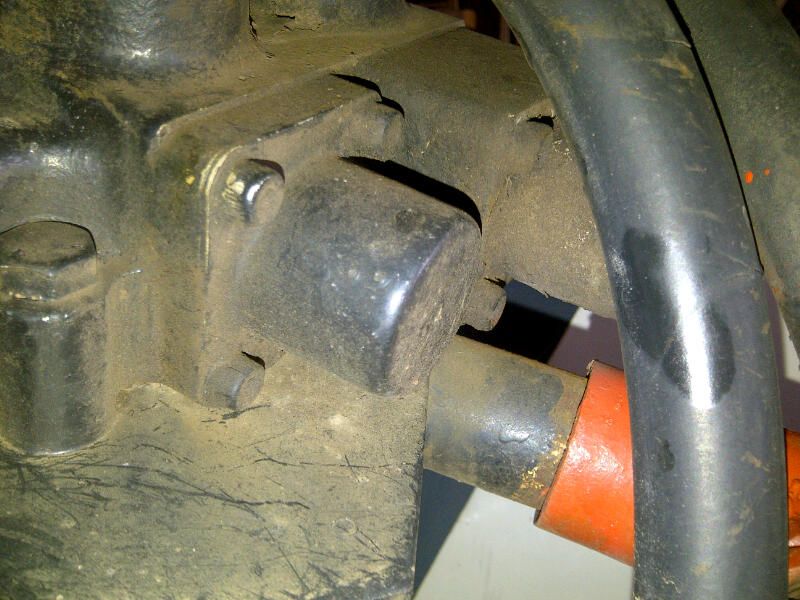
5. How do I identify the valve so I can get the right o rings? Are any of of you able to id it from the pics below, or is there another way to id it?

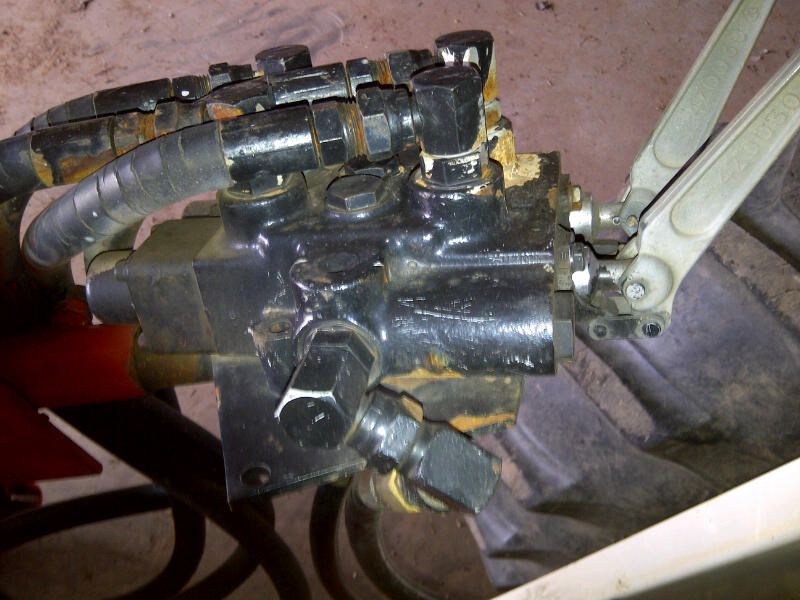
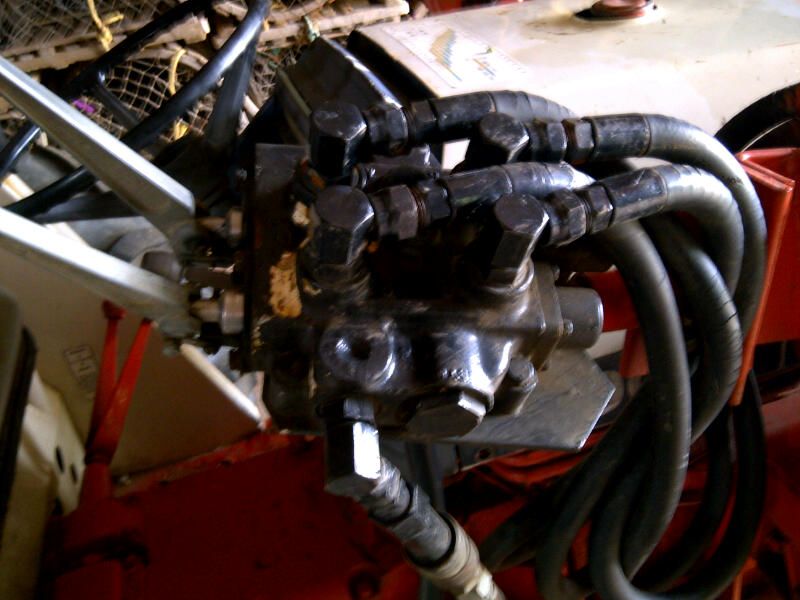

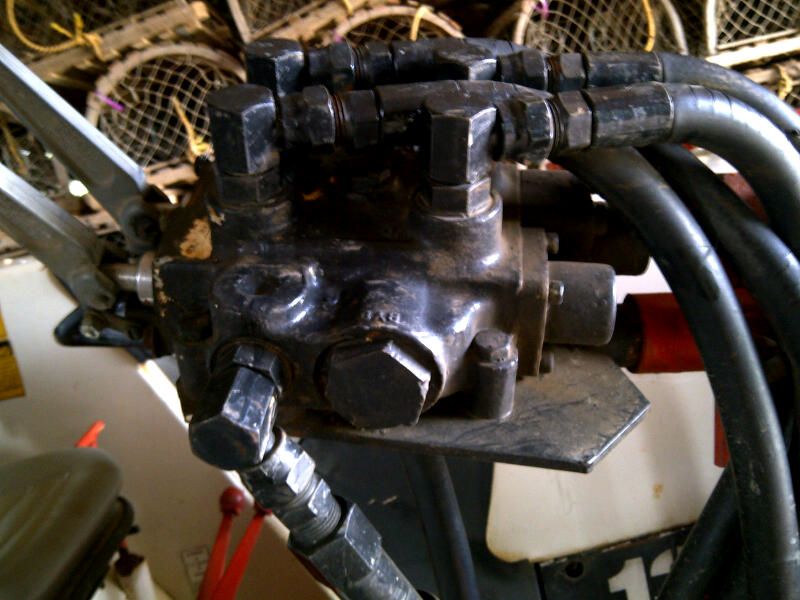
Sorry for the long post, but I thought too much info was better than too little. Thanks for any help that you are able to give!
The issue
The loader has never been very strong when lifting, but that has not been a big issue since most of my work is with the PTO for bush hogging. Moved about a dozen tandem loads of dirt over the last couple of months though and I could see that it was even weaker at the end then it was when I started that job. Then this morning the loader just gave out completely. Worked when I started the tractor and lifted the loader a couple of feet to be able to drive, then went out to bushhog. WHen I got to the field I tried to raise the loader higher and nothing. Tried the lever forward and the loader dropped, but would not come up at all any more. Loader will not raise and bucket will not tilt upward. Had to drive backward all the way from the field to the shed, dragging the bucket on the ground. 3 pt hitch still raises and lowers normally, and front power steering work fine. The fluid in the resevoir is at the full line on the dipstick. Here are my questions.
1. Is this loader powerred from the same pump as the 3 pt?
The loader valve has 4 hoses that go forward on the loader arm and two supply hoses that come back to just under the right hand side of the seat. Does that mean they are from the same pump as the back end hydraulics for the 3 pt? If that is the case then I presume my hydraulic pumps is not the issue, and that the filter is not clogged. (I will be honest though, that I don't even know where the pump and the filter are located.) Here is a pick of the hoses that supply the FEL valve.


2. My guess is that the issue is the loader valve. Do you agree?
The hoses that supply fluid to the FEL valve are getting warm when the tractor is running but the hoses to the loader arms and the bucket are not, so it seems like the fluid is getting to the valve but then going nowhere. To me that suggests that the FEL valve is the issue, but I am definitely not sure. Is it possible that there may have been air introduced to the system and maybe it needs to be bled? Is that what these two flat nuts are for that are underneath where the hoses connect into the valve?

3. If it is the valve, can that be repaired instead of replaced?
A friend who has more knowledge than I said that the valve rings can go and cause it to just let the fluid bypass. Is this correct, and does it make sense for both the bucket and the arms to stop working at the same time when this happens? He was just trying to help by giving a diagnosis over the phone, so it is hard for him to be sure, but he said that if I took apart the valve by taking the bolts out where the plungers go in, I could change the o rings. Does this sound correct to you guys, or is it at least the most logical starting point?
4. If we are in agreement to this point, what is the best way to take apart the valve, from the plungers in the front held in by two bolts, or the shrouds in the other end held in by 4 bolts? Pictures below?


5. How do I identify the valve so I can get the right o rings? Are any of of you able to id it from the pics below, or is there another way to id it?





Sorry for the long post, but I thought too much info was better than too little. Thanks for any help that you are able to give!

